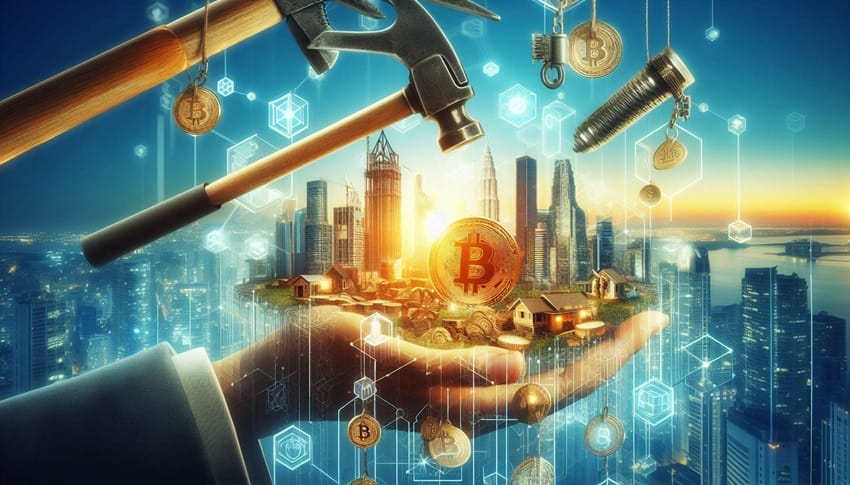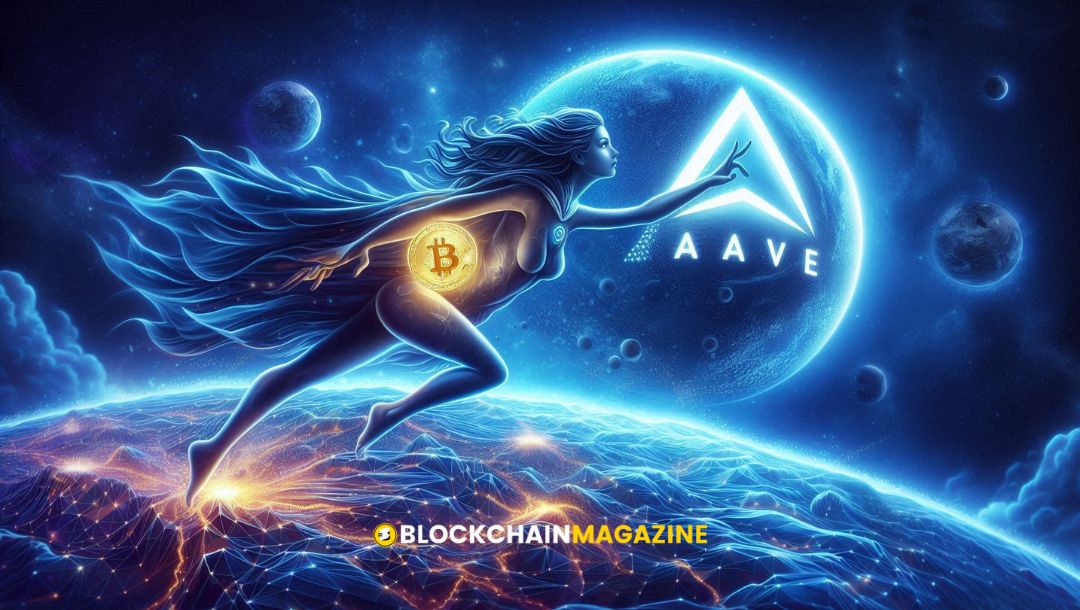The Future of Real World Assets With Blockchain, NFTs and Metaverse
As blockchain technology continues to evolve, its potential applications are expanding beyond cryptocurrencies. One of the most promising areas is the integration of blockchain, NFTs, and the metaverse with real-world assets. This convergence is poised to revolutionize asset ownership, investment, and interaction, offering unprecedented levels of transparency, efficiency, and democratization. This article explores the future of real-world assets in the context of these cutting-edge technologies.
Key Takeaways
- Blockchain provides a secure and transparent method for managing real-world assets, ensuring authenticity and reducing fraud.
- NFTs offer a revolutionary way to prove ownership and transfer of tangible assets, making them more accessible to a broader audience.
- The tokenization of real-world assets allows for fractional ownership, increasing liquidity and investment opportunities.
- The metaverse can integrate real-world assets, creating new marketplaces and experiences that blend the physical and digital worlds.
- Despite the potential, challenges such as security, market volatility, and regulatory hurdles must be addressed to fully realize these technologies’ benefits.
Understanding Blockchain for Real World Assets
Blockchain technology has revolutionized the way we think about digital transactions and ownership. By providing a decentralized and secure ledger, blockchain ensures that real-world assets can be managed with unprecedented transparency and efficiency.
NFTs and Their Role in Real World Asset Ownership
The rise of NFTs has opened up new possibilities for ownership and investment in high-value assets. NFTs offer several unique benefits when it comes to owning and investing in real-world assets. Let’s explore some of the ways in which NFTs are transforming traditional ownership.
Tokenization of Real World Assets
Tokenization of real-world assets (RWAs) is revolutionizing finance by transforming physical assets into digital tokens on blockchain. This process enhances liquidity and accessibility for investors, ensuring transparency and efficiency through blockchain technology.
Metaverse Integration with Real World Assets
The integration of real-world assets into the metaverse is a groundbreaking development that is reshaping how we interact with both physical and digital worlds. The metaverse can potentially drive the adoption of Web3 by allowing users to utilize blockchain-based assets and services seamlessly integrated into virtual environments.
Challenges and Risks in Using Blockchain for Real World Assets
Blockchain technology is often touted for its security features, but it is not without vulnerabilities. Smart contract bugs and hacking incidents can lead to significant financial losses. Additionally, the irreversible nature of blockchain transactions means that once a fraudulent transaction is confirmed, it cannot be undone.
The value of tokenized real world assets (RWA) can be highly volatile. This volatility can be attributed to both the underlying asset and the cryptocurrency market. Investors need to be aware that the value of their tokenized assets can fluctuate dramatically in a short period.
The regulatory landscape for blockchain and real-world asset tokenization is still evolving. As these technologies gain popularity, it’s important for regulators to establish guidelines to protect investors and ensure compliance. This includes addressing issues related to revenue models and liquidity.
The future of real world assets (RWA) is the future, Anndy Lian discusses tokenization of assets like commodities, art, and real estate on the blockchain. Emphasizes challenges in revenue models and liquidity, with success examples in art tokenization.
Future Trends in Blockchain for Real World Assets
Emerging Technologies
The integration of emerging technologies with blockchain is set to revolutionize the management of real-world assets. Innovations such as artificial intelligence (AI), Internet of Things (IoT), and advanced cryptographic techniques are enhancing the capabilities of blockchain systems. These technologies enable more efficient data processing, improved security measures, and seamless asset tracking.
Predictions for Adoption
As blockchain technology continues to mature, we can expect a broader adoption across various industries. Financial institutions, real estate companies, and supply chain management firms are increasingly exploring blockchain solutions. This trend is driven by the need for enhanced transparency, reduced fraud, and streamlined operations. The adoption of blockchain for real-world assets is not just a trend but a new wealth frontier.
Potential Impact on Global Markets
The potential impact of blockchain on global markets is profound. By enabling the tokenization of real-world assets, blockchain can democratize investment opportunities and bring a new level of efficiency to traditional markets. This shift could lead to increased liquidity, reduced transaction costs, and greater market accessibility for a wider range of investors.
The future of real-world assets with blockchain is promising, offering a new wealth frontier with blockchain and real-world assets. Blockchain magazine explores how blockchain revolutionizes RWA management, enhancing transparency and efficiency in asset markets. Challenges and future prospects are discussed.
Case Studies of Blockchain in Real World Assets
Real Estate
Blockchain technology has revolutionized the real estate industry by enabling the tokenization of properties. This allows for fractional ownership, making it easier for individuals to invest in real estate without needing to purchase an entire property. For example, a luxury apartment in New York was successfully tokenized, allowing investors to buy shares in the property and receive rental income proportional to their investment.
Art and Collectibles
The art world has also embraced blockchain through the tokenization of famous artworks. Real-world asset (RWA) tokenization is a transformative process that leverages blockchain technology to create digital representations of physical assets. This has enabled artists to sell their work as NFTs, providing a new avenue for buying and selling art. A notable case is the tokenization of a Picasso painting, which allowed multiple investors to own a fraction of the artwork.
Automobiles
In the automobile industry, blockchain has been used to create digital twins of physical cars. This ensures that the history and ownership of a vehicle are securely recorded on the blockchain. For instance, a rare vintage car was tokenized, allowing car enthusiasts to invest in a share of the vehicle and participate in its appreciation over time.
Blockchain technology is not just a trend; it’s a fundamental shift in how we perceive and manage ownership of real-world assets.
Conclusion
In conclusion, the convergence of blockchain technology, NFTs, and the metaverse is poised to revolutionize the ownership and investment landscape for real-world assets. While challenges remain, the potential benefits such as democratized ownership, enhanced transparency, and increased efficiency are too significant to ignore. As these technologies continue to evolve and gain wider adoption, we can expect to see a transformative impact on traditional markets, making them more accessible and dynamic. The future of real-world assets is undoubtedly intertwined with the advancements in blockchain and NFTs, heralding a new era of economic and social interactions.
Frequently Asked Questions
What are real-world assets?
Real-world assets refer to any physical or tangible object that holds value, such as real estate, fine art, precious metals, collectibles, and intellectual property.
How does blockchain technology secure real-world assets?
Blockchain technology secures real-world assets by providing a decentralized, immutable ledger for recording transactions. This ensures transparency, traceability, and reduced risk of fraud.
What are NFTs and how do they relate to real-world assets?
NFTs, or non-fungible tokens, are unique digital assets that can represent ownership of real-world assets. They provide proof of ownership and authenticity, enabling fractional ownership and easier transfer of tangible assets.
What are the benefits of using NFTs for tangible assets?
The benefits of using NFTs for tangible assets include enhanced liquidity, fractional ownership, transparency, authenticity, and reduced transaction costs.
What is asset tokenization and how does it work?
Asset tokenization is the process of converting real-world assets into digital tokens on a blockchain. These tokens can be traded, fractionalized, or held securely, representing ownership of the physical asset.
What are the challenges and risks of using blockchain for real-world assets?
Challenges and risks include security concerns, market volatility, and regulatory hurdles. Ensuring compliance with legal frameworks and addressing technological vulnerabilities are essential for the successful integration of blockchain with real-world assets.
Stay informed with daily updates from Blockchain Magazine on Google News. Click here to follow us and mark as favorite: [Blockchain Magazine on Google News].
Get Blockchain Insights In Inbox
Stay ahead of the curve with expert analysis and market updates.
latest from tech
Disclaimer: Any post shared by a third-party agency are sponsored and Blockchain Magazine has no views on any such posts. The views and opinions expressed in this post are those of the clients and do not necessarily reflect the official policy or position of Blockchain Magazine. The information provided in this post is for informational purposes only and should not be considered as financial, investment, or professional advice. Blockchain Magazine does not endorse or promote any specific products, services, or companies mentioned in this posts. Readers are encouraged to conduct their own research and consult with a qualified professional before making any financial decisions. The featured image used is just a creative depiction of the title and it does not intend to hurt sentiments of any person or institution. If it hurts anyone sentiments, please do not hesitate to reach out to Blockchain Magazine.

 Bitcoin
Bitcoin  Ethereum
Ethereum  XRP
XRP  Tether
Tether  Solana
Solana  USDC
USDC  Dogecoin
Dogecoin  Cardano
Cardano  Lido Staked Ether
Lido Staked Ether  TRON
TRON  Wrapped Bitcoin
Wrapped Bitcoin  Wrapped stETH
Wrapped stETH  Chainlink
Chainlink  Avalanche
Avalanche  Sui
Sui  Stellar
Stellar  Litecoin
Litecoin  Toncoin
Toncoin  Shiba Inu
Shiba Inu  Hedera
Hedera  LEO Token
LEO Token  USDS
USDS  Hyperliquid
Hyperliquid  MANTRA
MANTRA  Polkadot
Polkadot  WETH
WETH  Bitcoin Cash
Bitcoin Cash  Bitget Token
Bitget Token  Ethena USDe
Ethena USDe  Wrapped eETH
Wrapped eETH  Uniswap
Uniswap  Monero
Monero  NEAR Protocol
NEAR Protocol  Pepe
Pepe  WhiteBIT Coin
WhiteBIT Coin  Aave
Aave  Ondo
Ondo  Bittensor
Bittensor  Aptos
Aptos  Internet Computer
Internet Computer  Dai
Dai  Official Trump
Official Trump  Ethereum Classic
Ethereum Classic  Mantle
Mantle  Tokenize Xchange
Tokenize Xchange  OKB
OKB  Gate
Gate  sUSDS
sUSDS  Coinbase Wrapped BTC
Coinbase Wrapped BTC 



